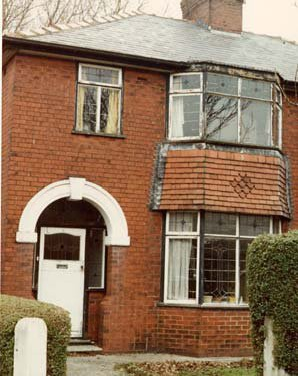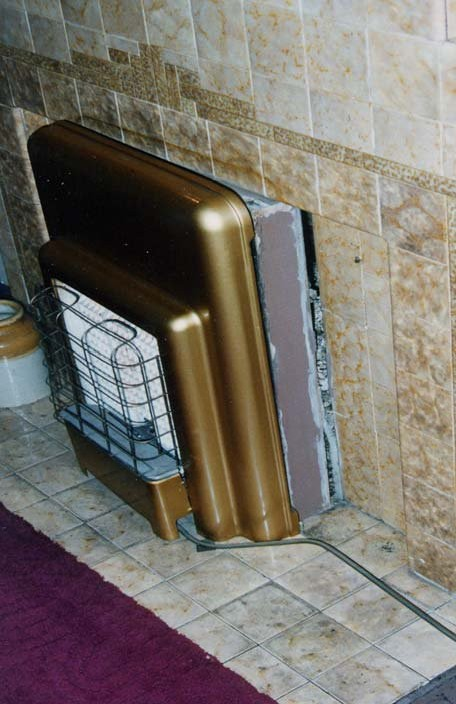


HHSRS VERSION 2
Vulnerable age
Related hazards
All ages
Multiple locations
Uncombusted gas: Carbon Monoxide etc Secondary hazards
EXPLOSIONS
Yes
No
Yes
No
A) Gas fire to ground floor front room
Front elevation
[Main photo stretched to fit exactly between
lines}
Rear elevation
Rear elevation
DESCRIPTION OF HAZARDS
Dwelling:
1920s semi-detached house
A)
Gas pipe and fire: The gas fire fitted into the open fireplace in the front living room is old and
obsolete. The joint between the fire and the opening is unsealed. However, more relevant is that the
movement of the gas fire has loosened the joint between the pipe and the gas tap. There is no
permanent means of ventilation to the room. Neither the fire nor the gas installations have been
checked or serviced over the last five years.
LIST OF RELEVANT MATTERS
LIKELIHOOD
A
# Secondary hazards
A
a
Unauthorised gas supply
-
-
None
-
b
Siting of gas tanks
-
c
Gas installations - defects
3
d
Gas appliance - defects
3
e
Maintenance defects
3
f
Ventilation
3
g
Gas storage
-
h
Hot water storage tanks
-
i
Vented hot water system
-
Key
3
Seriously defective
1 Not satisfactory
j
Unvented hot water system
-
2
Defective
- Satisfactory/NA
A B C D E F G H
I
J
Average likelihood, outcomes and HHSRS score for hazards from explosions for all persons
in 1920-45 houses and all dwellings, 1997-99
Score
18
HEALTH AND SAFETY RATING SYSTEM SCORES
1920-45 house
1 in
32
LIKELIHOOD
Low
High
Average: 159,528
Example
32
< 4200 2400 1300 750 420 240 130
75
42
24
13
7.5
4
2.5
1.5 >
Justification
OUTCOMES
Class I
Class II
Class III
Class IV
Justification
RATING
Whether or not the fire is in use, there is a significant likelihood of uncombusted gas
leaking into the room. With no means of permanent ventilation (particularly at high level)
the gas will accummulate within the room. A spark from a light switch or electric socket,
or a lighted match would be sufficient to cause an explosion. On the otherhand, it is
likely that the smell of gas would alert most people to the problem first and this has been
taken into account when determining the likelihood.
%
Average: 11.2
10.0
< 0.05 0.15 0.3
0.7
1.5
3
7
15
26
38 >
Av: 0.0
0.0
< 0.05 0.15 0.3
0.7
1.5
3
7
15
26
38 >
Av: 5.4
4.6
< 0.05 0.15 0.3
0.7
1.5
3
7
15
26
38 >
Av: 83.4
85.4
IMPROVE
Justification
NEW RATING
Av: Nos
10.0
0.0
4.6
85.4
< 0.05 0.15 0.3
0.7
1.5
3
7
15
26
38 >
There is nothing to suggest that the harm outcomes will differ from the average
Example
B
Average: 1
C D E F G H
I
J
A
3194
Score
RATING SCORES AFTER IMPROVEMENT
Likelihood to
1 in 5,600
Outcomes to
10.0 0.0
4.6 85.4 %
The gas installations and this gas fire (and any other gas appliances) should be properly
tested and any works carried out. This would probably include renewal of the fire and of
the pipe work. In addition, permanent means of ventilation (at high level) should be
installed. These works would bring the likelihood to the average.
Improved